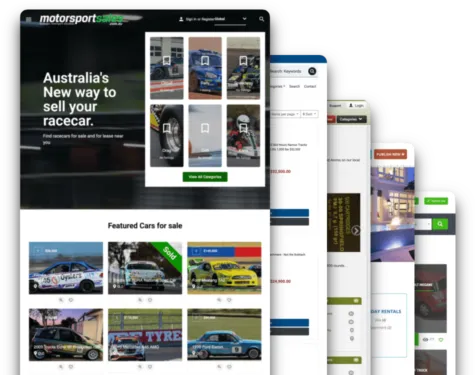Social commerce combines social media interaction with e-commerce, creating a powerful tool for online marketplaces to engage users and drive sales.

By embedding social commerce into your online marketplace, you create a more interactive, user-centric experience that fosters trust, increases conversions, and builds community. Here's a guide to integrating social commerce effectively, with examples of companies doing it well.
1. Understanding Social Commerce
Social commerce refers to using social media channels or social features to facilitate and drive e-commerce transactions. It includes tools like shoppable posts, user-generated content (UGC), social sharing, reviews, and community forums. The aim is to leverage the social nature of users to increase engagement and trust in the marketplace.
Some of the benefits of social commerce:
- Higher Engagement: Social features keep users interacting with your platform.
- Enhanced Trust: Peer recommendations and social proof boost buyer confidence.
- Increased Sales: Integrated buying experiences shorten the purchase journey.
2. Strategies to Embed Social Commerce
a) Enable Social Sharing of Listings
Allow users to share listings directly to platforms like Facebook, Instagram, and WhatsApp. This feature enables sellers to reach a broader audience while buyers can share potential finds with friends and family.
Example:
- Etsy: Sellers can directly share their product listings on Instagram or Pinterest, attracting organic traffic to their shops.
b) Incorporate Shoppable Social Media Feeds
Integrate live social media feeds within your marketplace that showcase user-generated content or promotional posts. Link products or services to their respective listings to facilitate easy purchases.
Example:
- Shopify: Shopify merchants can create Instagram shops that sync directly with their Shopify product catalogs.
c) Facilitate Peer-to-Peer Reviews and Ratings
Embed review and rating features where users can leave feedback on products or sellers. Highlight positive reviews and allow users to upvote helpful reviews.
Example:
- Amazon: Reviews often include photos and videos, offering potential buyers firsthand insight into the product's quality and usability.
d) Add Live Selling and Streaming Features
Incorporate live-stream shopping where sellers or influencers showcase products in real-time, answer audience questions, and close sales directly during the session.
Example:
- Taobao Live (Alibaba): Pioneered live shopping in China, generating billions in sales during live-stream events.
e) Build Community Forums and Social Groups
Offer spaces for buyers and sellers to interact, share tips, or discuss products. These forums build a sense of community and loyalty among users.
Example:
- Poshmark: The app's "Posh Parties" are virtual shopping events that bring the community together to buy and sell items in real-time.
f) Leverage User-Generated Content
Encourage users to post photos or videos of their purchases on social media with branded hashtags. Feature the best content on your platform or social media pages to build trust and authenticity.
Example:
- Wayfair: The company uses the hashtag #WayfairAtHome to showcase customer photos, helping potential buyers visualize products in real-life settings.
g) Use Influencer Marketing and Social Proof
Collaborate with influencers to showcase your marketplace offerings. Influencers lend credibility to your brand, helping to attract their followers to your platform.
Example:
- Depop: Frequently collaborates with influencers to feature curated items, targeting Gen Z users with sustainable fashion.
3. Best Practices for Implementing Social Commerce
a) Optimize for Mobile
Ensure your platform and social commerce features are mobile-friendly. Most social commerce interactions happen on mobile devices.
b) Focus on Seamless User Experience
Embed intuitive features like one-click buying from social feeds or in-app checkouts.
c) Encourage Engagement Through Incentives
Offer discounts or rewards for sharing listings, leaving reviews, or participating in social activities on your platform.
d) Track and Analyze Performance
Monitor metrics such as shares, likes, conversions, and engagement rates to refine your social commerce strategy.
4. Examples of Companies Successfully Embedding Social Commerce
a) Facebook Marketplace
Facebook has fully integrated social commerce into its platform, enabling users to buy and sell items locally. Its seamless interaction between groups and listings demonstrates the power of community in commerce.
b) Instagram Shops
Instagram allows businesses to set up a virtual storefront, tagging products in posts and stories. The ability to shop directly from the app creates a streamlined purchase journey.
c) TikTok Shop
TikTok Shop combines short-form videos with e-commerce. Brands and creators can add product links to videos, enabling users to shop directly within the app.
d) Vinted
Vinted, a second-hand clothing marketplace, integrates social sharing features, allowing users to share their favorite items on various social platforms, driving visibility and engagement.
e) Redbubble
Artists on Redbubble can share their designs via integrated social sharing tools, driving traffic to their storefronts from platforms like Pinterest and Instagram.
5. Challenges and How to Overcome Them
a) Maintaining Platform Trust
Social commerce relies heavily on trust. Implement robust moderation tools to prevent scams and ensure transparency.
b) Integrating with Social Platforms
Ensure your marketplace integrates seamlessly with social platforms. Use APIs to connect your inventory with social media features.
c) Content Moderation
Monitor user-generated content to ensure compliance with community guidelines and brand values.
6. Future of Social Commerce in Marketplaces
As technologies like AI, AR, and blockchain evolve, social commerce will become even more immersive. Virtual try-ons, personalized recommendations, and decentralized marketplaces will further revolutionize how users interact with online marketplaces.
Example:
- Snapchat: Offers augmented reality shopping experiences where users can try on products like sunglasses or makeup virtually.
Embedding social commerce into your online marketplace enhances user engagement, builds community, and increases conversions.
By leveraging features like shoppable posts, live selling, user-generated content, and peer-to-peer reviews, your platform can create an interactive, trust-driven environment.
Learning from successful companies like Facebook, Poshmark, and TikTok, you can adapt and innovate your marketplace to thrive in the social commerce era.
Start small by implementing a few features and gradually expand your strategy based on user feedback and market trends.
With the right tools and approach, your marketplace can become a hub for both commerce and community.
Need help creating your online marketplace? Contact us!

